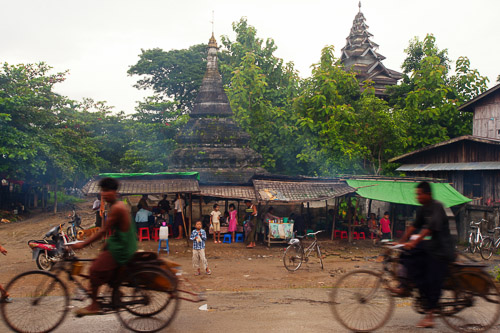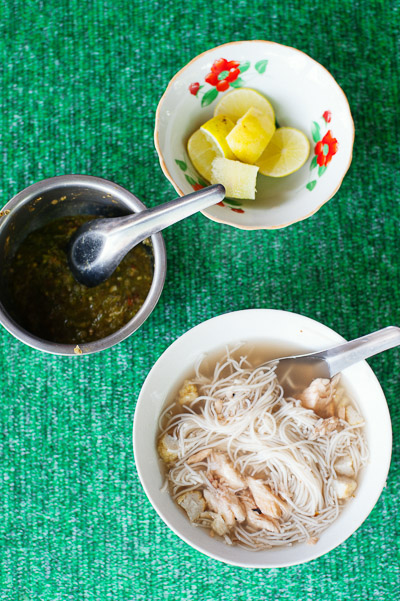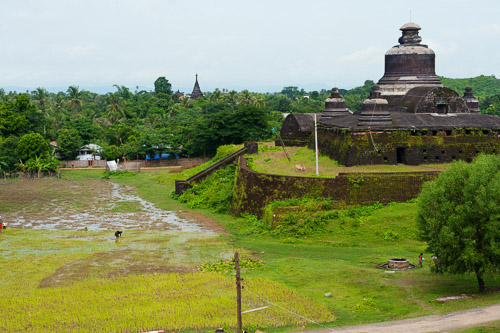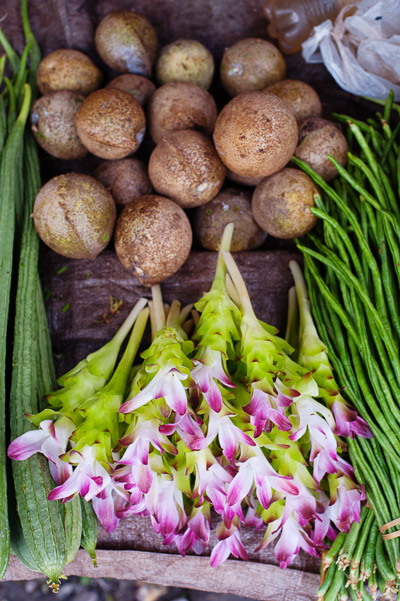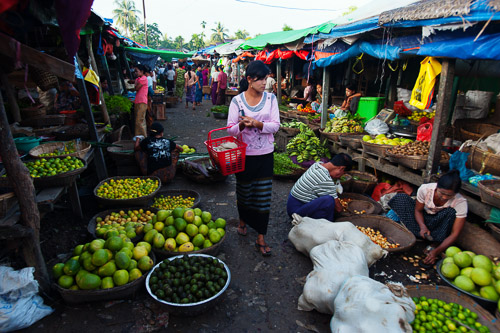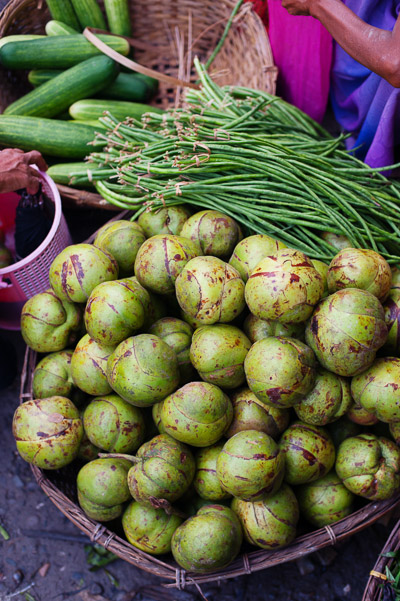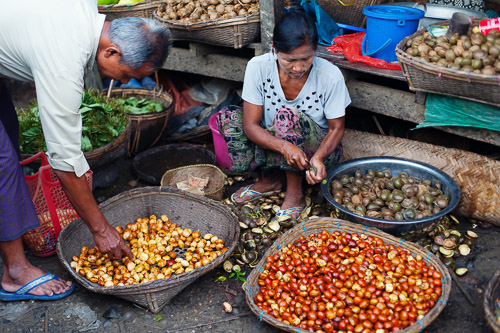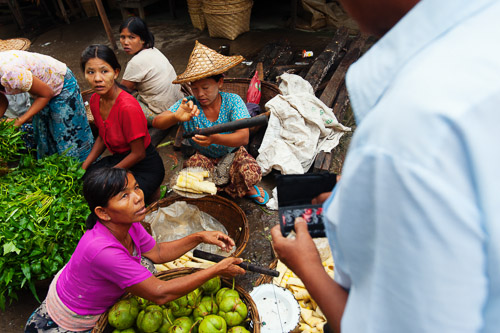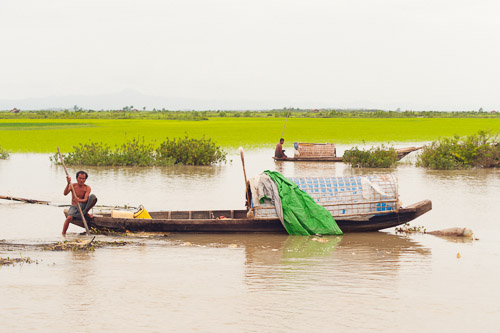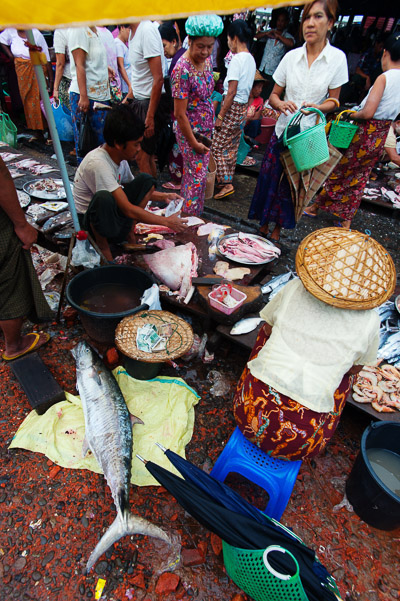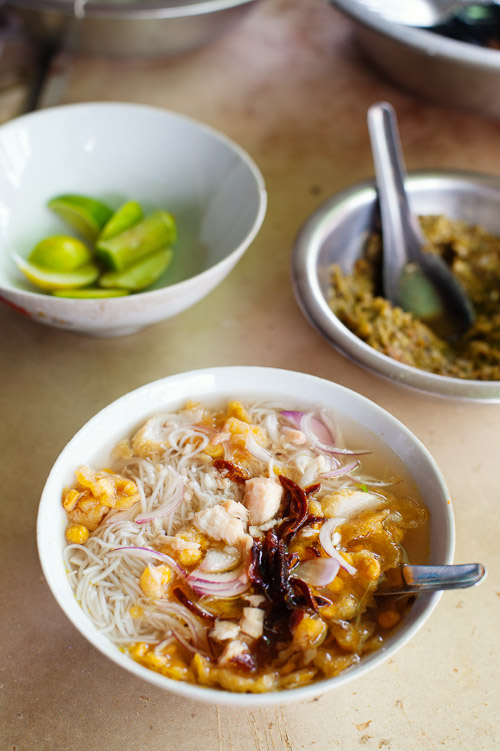 I ate well in Rakhine State. This was a pleasant surprise, as I wasn't quite sure what to expect. The state's location in Myanmar's far west, along the border with Bangladesh, suggests a South Indian Influence. And a long-standing Muslim population seems to indicate dishes with a halal bias.
I ate well in Rakhine State. This was a pleasant surprise, as I wasn't quite sure what to expect. The state's location in Myanmar's far west, along the border with Bangladesh, suggests a South Indian Influence. And a long-standing Muslim population seems to indicate dishes with a halal bias.
But the food in Rakhine State proved to be distinctly, well, Rakhine.
My first experience with the local food was with rakhine monti, Rakhine-style noodles. The state's most famous culinary export (it's available at stalls and restaurants across Myanmar), it's a simple but satisfying bowl that combines fish from the state's waters, and rice from its fields:
In this case the fish is the basis of the broth, which in the better versions of the dish is somewhat thick and positively spicy from the addition of pepper. Flaked fish also garnishes the dish, along with optional toppings of fish cakes, deep-fried lentil fritters, fresh and/or deep-fried shallots and a drizzle of turmeric oil. Condiments include slices of lime and without fail, a bowl of spicy green chilies, roasted and pounded into a rough paste with salt -- a dish much like the northern Thai nam phrik num.
Rice is the main ingredient in the noodles, which are made via a laborious, multi-day process that appears to be the same as that which goes into making Thai khanom jeen. I got to witness the process first-hand at Mahin Kyi village, at the edge of the historical city of Mrauk U.
After soaking, grounding and pounding the rice, which, incidentally, is harvested from fields next door to ancient ruins:
the noodles are squeezed into boiling water and served fresh:
I was told that the noodles made in Mrauk U are the best; 'They're thinner,' my translator explained. 'In Sittwe they like thick noodles.'
Rakhine monti wasn't the only dish that included nga yoke thi chik, the pounded chili condiment; it showed up in every subsequent Rakhine-style curry meal as a side. It was extremely spicy, and was served coupled with a few slices of cucumber, par-boiled greens and almost without exception, the crunchy, fragrant blossom of the galangal root:
I found many of the dishes in Rakhine state quite spicy -- a noteworthy contrast with the predominately savoury, mild dishes of central Myanmar. The tart dishes were distinctly tart, and salty dishes were salty -- a full-flavoured approach to cooking that, in many ways, has a lot in common with Thai- and Lao-style cooking.
Perhaps this was due to the fact that the Rakhine, like the Thai and Lao, have a seemingly vast repertoire of ingredients to choose from:
Mrauk U's morning market was really one of the most exotic markets I'd been in Southeast Asia, and had a huge array of produce I'd never seen elsewhere, such as ta pyu thi:
a softball-sized fruit that the locals boiled until it disintegrated into a thick, sour soup, often supplemented with tiny fresh shrimp.
Particularly popular during the rainy season was ta nyin thi:
hard pods known in English as dogfruit and locally as anyaw thi. The pungent fruit is boiled until tender and served dipped in oil seasoned with a bit of salt, as part of a curry meal.
The wet weather also meant lots of fern fronds and bamboo:
Yet even during the dry season, Rakhine State is a wet place, with lots of rivers and access to the sea:
Sittwe, the state capital, which is located on an island, is also a port with a busy fish market:
Fish curries were a staple in every curry restaurant I visited in Rakhine State, and in Sittwe I had a particularly tasty one featuring huge squares of fatty, gelatinous stingray.
But perhaps the best meal I had in Rakhine State was the one prepared by my guide's wife. I don't have any photos of the meal, but it spanned a rich, oily chicken curry; an intensely smokey/spicy 'salad' of grilled and pounded eggplant; a broth made tart with young tamarind leaves; a vegetable stir-fry; and of course, that spicy chili paste.
If you're visiting Rakhine State and require a guide who happens to have a wife who is a talented cook, consider Sittwe-based Naing Naing (+959421746111, mr.theinnaing.f4@gmail.com).












